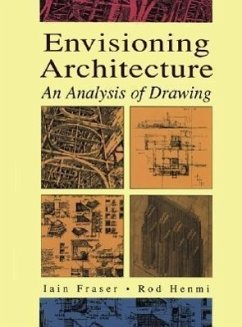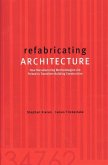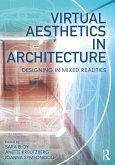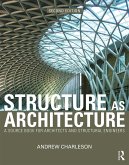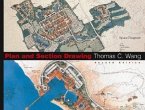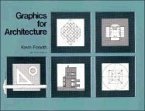Examples of world-renowned masters of architecture are used in this enlightening book that explores the "why" of architectural drawing, rather than the "how." By emphasizing the value of drawing over technique, the authors demonstrate how the drawing itself influences the designer's processes of thought, and exerts its own pull on the evolution of the concept.
Between the imagination of the architect and the design of a building lies a key element - the act of drawing itself. Drawing reveals, edits, persuades, highlights, and sometimes obscures. Due to the pervasive presence of drawing in the evolution of design ideas, designers often do not clearly understand how their drawings affect their ideas. Envisioning Architecture: An Analysis of Drawing explores all aspects of how the drawing process translates as well as transforms design ideas. Unlike other books that focus on specific drawing methods and techniques, this guide clarifies the relationship of drawing to design on a conceptual level - by focusing on the why, rather than the how, of drawing. Designers and architects see how specific drawings, drawing types, and drawing applications influence the generation, development, and articulation of formal ideas. The authors pay particular attention to specific connections between the act of drawing and the design of architecture. In the first part of the book, they address conventional types of architectural drawing such as orthographic, axonometric, and perspective drawing. They discuss each drawing type as a distinct construct that has specific impacts of visualization and execution. The second part covers drawing applications at various stages of design. Extensive illustrations clarify uses of drawings as references, methods for conceptualization and development, aspects of persuasion (presentation), ways to explore visionary realms, and issues of representation. Detailed criticism of individual drawings and drawing types shows how drawing involves itself with architectural imagination. Readers will sharpen their powers of recognition andunderstanding of the nuances, subtleties, and strengths of drawing in the making of architecture. Many of the drawings analyzed are from the portfolios of distinguished architects such as Aalto, Le Corbusier, Kahn, Wright, van der Rohe and Mendelsohn, as well as many other leading contemporary practitioners. These drawings vary widely in type and style - from rudimentary conceptual sketches to highly refined presentation drawings. By viewing these drawings in the context of the design methodology of their respective renderers, readers will clearly see the role played by drawing in the evolution of these designs. Both practitioners and students in design and architecture will benefit from this guide. It will help them build a new awareness of the value and purpose of drawing in their work.
Between the imagination of the architect and the design of a building lies a key element - the act of drawing itself. Drawing reveals, edits, persuades, highlights, and sometimes obscures. Due to the pervasive presence of drawing in the evolution of design ideas, designers often do not clearly understand how their drawings affect their ideas. Envisioning Architecture: An Analysis of Drawing explores all aspects of how the drawing process translates as well as transforms design ideas. Unlike other books that focus on specific drawing methods and techniques, this guide clarifies the relationship of drawing to design on a conceptual level - by focusing on the why, rather than the how, of drawing. Designers and architects see how specific drawings, drawing types, and drawing applications influence the generation, development, and articulation of formal ideas. The authors pay particular attention to specific connections between the act of drawing and the design of architecture. In the first part of the book, they address conventional types of architectural drawing such as orthographic, axonometric, and perspective drawing. They discuss each drawing type as a distinct construct that has specific impacts of visualization and execution. The second part covers drawing applications at various stages of design. Extensive illustrations clarify uses of drawings as references, methods for conceptualization and development, aspects of persuasion (presentation), ways to explore visionary realms, and issues of representation. Detailed criticism of individual drawings and drawing types shows how drawing involves itself with architectural imagination. Readers will sharpen their powers of recognition andunderstanding of the nuances, subtleties, and strengths of drawing in the making of architecture. Many of the drawings analyzed are from the portfolios of distinguished architects such as Aalto, Le Corbusier, Kahn, Wright, van der Rohe and Mendelsohn, as well as many other leading contemporary practitioners. These drawings vary widely in type and style - from rudimentary conceptual sketches to highly refined presentation drawings. By viewing these drawings in the context of the design methodology of their respective renderers, readers will clearly see the role played by drawing in the evolution of these designs. Both practitioners and students in design and architecture will benefit from this guide. It will help them build a new awareness of the value and purpose of drawing in their work.

